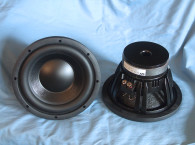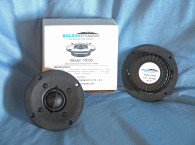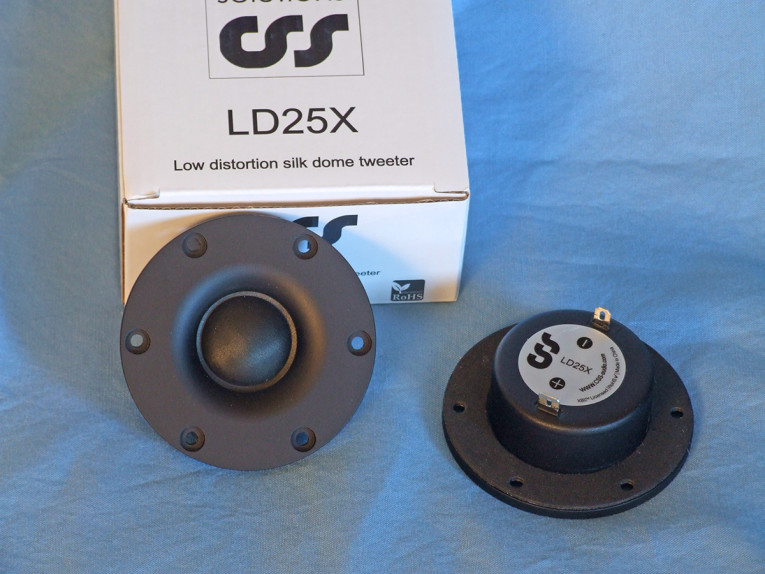

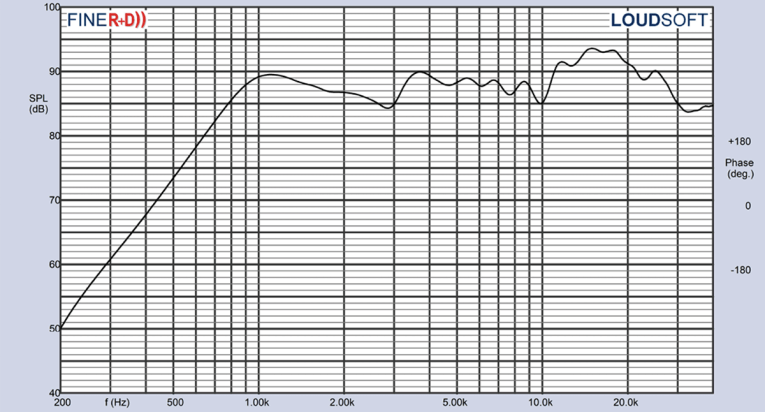
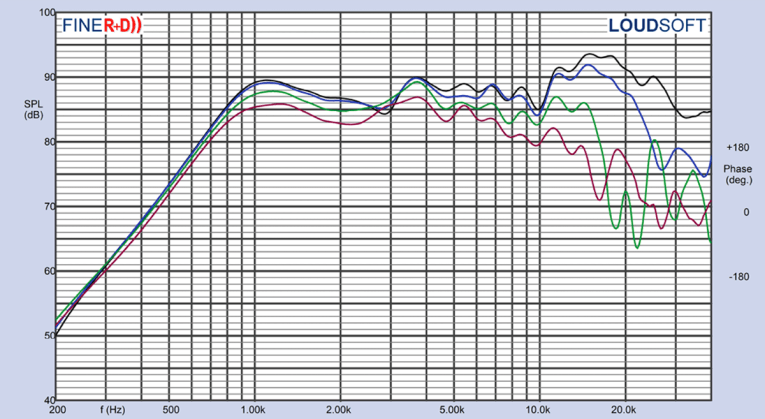
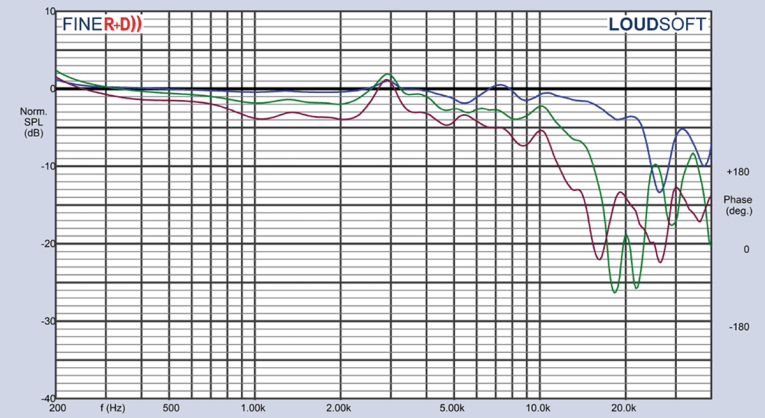
CSS sent Voice Coil its latest high-end tweeter, the LD25X (see Photo 1). This is being billed as the “Return of a Legend,” so it was obviously part of the CSS line-up at an earlier time. The thing that makes this tweeter really special is its unique dual-gap patented XBL2 motor. CSS licenses the XBL2 technology from inventor Dan Wiggins for two of its woofers and for the LD25X tweeter.
Like the Mmag patented dual-gap dual-magnet motor technology developed by Enrique Stiles and Patrick Turnmire, the XBL2 motor features a short voice coil traveling between two gaps. While Mmag uses two magnets and two plates, XBL2 creates two gaps by using a thick front plate with a CNC’d groove in the middle of the plate to form the dual-gap structure. Whichever dual-gap technology is used, Mmag or XBL, results in a typically shorter voice coil that travels into the second gap as it is traveling out of the first gap, the upshot being a higher Xmax than most conventional motors can provide.
Features for this transducer include a 25 mm silk dome diaphragm and flat silk surround, a 73 mm diameter six-screw cast-aluminum faceplate anodized semi-flat black, a two-layer 25 mm diameter copper-clad aluminum wire (CCAW) voice coil wound on a Kapton former, a neodymium slug with a copper cap shorting ring (Faraday shield) and a bucking magnet (this increases flux in the gap and makes the motor self-shielding), and acoustic damping material beneath the dome. It also has venting into the back cup, which is also damped, 89 dB 2.83 V/1 m sensitivity, and a nominal 8 Ω impedance.
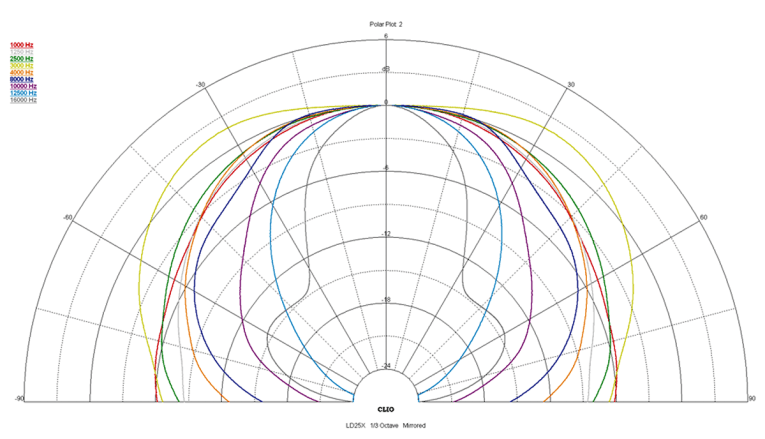

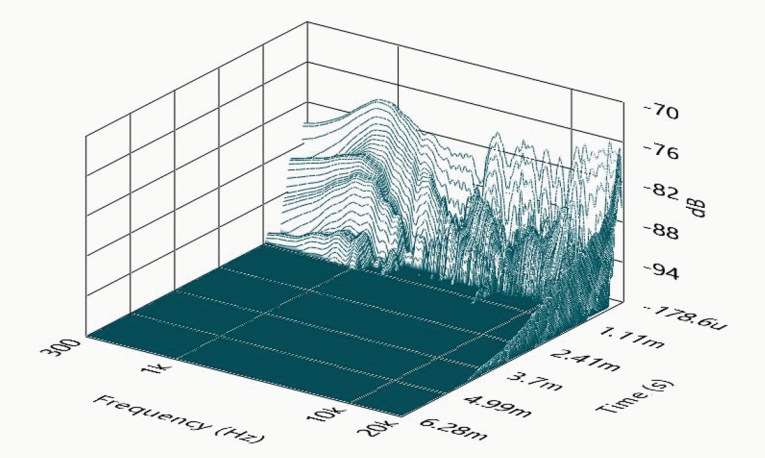

To begin testing, I used the LinearX LMS analyzer to produce the 300-point impedance sweep illustrated in Figure 1. The resonance occurs at a fairly low 895 Hz (factory spec is 865 Hz). With a 6.59 Ω DCR (Re), the minimum impedance for this tweeter is 6.90 Ω at 2.06 kHz.
Following the impedance test, I recess mounted the CSS LD25X XBL2 tweeter in an enclosure that had a baffle area of 10" × 6" and measured the on- and off-axis frequency response. Once again used the LoudSoft FINE R+D analyzer (courtesy of LoudSoft) and the GRAS 46BE 1/4” microphone (graciously provided by GRAS Sound Vibration). I set up the equipment to measure the 200 Hz to 40 kHz frequency response (using a 192 kHz sampling rate) at 2 V/0.5 m normalized to 2.83 V/1 m. Data was then acquired with sweeps at 0°, 15°, 30°, and 45°. Figure 2 shows the on-axis response of the CSS LD25X, which measured ±3 dB from 760 kHz to 11.5 kHz, with a 3.5 dB rise between 11.5 kHz and 21 kHz and extending to 40 kHz. Figure 3 gives the on- and off-axis response of the LD25X XBL2 tweeter. Figure 4 shows the off-axis curves normalized to the on-axis response.
Figure 5 shows the CLIO 180° polar plot (measured in 10° increments with 1/3 octave smoothing). Figure 6 shows the two-sample SPL comparison, indicating the two samples were closely matched to within less than 1 dB throughout its operating range. Note the operating range is defined as from the crossover high-pass network to about 10 kHz. Since the QC variation is normal above 10 kHz, most factory QC procedures include opening a wider QC window between 10 kHz and 20 kHz.
For the last test procedure, I again initialized the Listen SoundCheck AudioConnect analyzer along with the Listen SCM-2 1/4” microphone (all provided courtesy of Listen, Inc.) to measure the impulse response with the tweeter recess mounted on the same test baffle. Importing this data into the Listen SoundMap software produced the cumulative spectral decay (CSD) waterfall plot shown in Figure 7. The Short Time Fourier Transform (STFT) displayed as a surface plot is shown in Figure 8.

For the last SoundCheck test protocol, I set the 1m SPL to 94 dB (5.75 V) using a noise stimulus and builtin SLM, and measured the second- and third-harmonic distortion with the microphone placed 10 cm from the dome diaphragm (see Figure 9). Note that the distortion is dominated by second harmonic distortion (a good thing), and third-order harmonic distortion is extremely low. For more information, visit www.css-audio.com. VC
This article was originally published in Voice Coil, July 2020.




